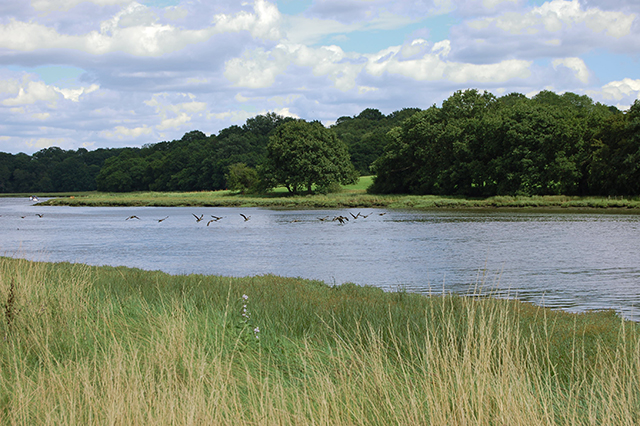Peter Bruce discovers the thriving wildlife in the sheltered waterways at Keyhaven and on either side of Lymington River
In recent geological times the Solent has seen some big changes.
Some 20,000 years ago, at the peak of the last ice age, the sea water level was 120m lower than it is today and there was an east-going river where the Solent is now.
A much more recent change has been the extent of the marshes on the Hampshire side of the western Solent, where old charts show that steady erosion has removed half a mile of marshland over the past 200 years.
Apart from being sheltered and attractive waterways, the area is home to plentiful birdlife including geese, ducks and waders. Predators, such as peregrine falcons, marsh harriers, short-eared owls and merlins, thrive in this avian community too.
The backwaters of the Lymington River silt up every year, requiring regular maintenance. In winter, the growl of the two marina barges can be heard as they ply their way past the marshes to dump their load out to sea.

Iley Lake joins up Stivers Lake and Hawkers Lake to the west
The Lymington Harbour Commissioners have taken to depositing dredged mud on the south side of Boiler Marsh, once called Shore Head, south of Pylewell Lake, to reinforce the ever-diminishing marshland.
The so-called boiler, after which the marsh was more recently named, went ashore sometime in the 1950s but has now been swallowed by the mud. It was, however, never a boiler, just a large mooring buoy.
In its place a conspicuous black wreck appeared in February 2013, which was said to have been abandoned after a collision with a submarine in the Channel. The vessel drifted into the Solent and went aground in a storm and, as it was the only home of the owner, after discovering its whereabouts he made attempts to live on board rather than camping on shore.
In the spring, the black-headed gulls nest in colonies on Boiler Marsh or on the marshland south of Crooked Lake, which is still called Cockleshell or Shell Island by locals.
Continues below…
King’s Quay Creek, Isle of Wight
This enchanting creek on the Isle of Wight is a must-visit for nature lovers, says Peter Bruce
The unspoilt River Yar
Peter Bruce finds peace and tranquility as he meanders up Yarmouth’s pretty waterway
Exploring the hidden Hamble
Peter Bruce discovers the rich heritage of the Hamble as he winds his way upriver
The raucous cries of the gulls can be heard up to half a mile away in March. This clamour develops into a scream when peregrine falcons sweep over the salterns, seeking a victim to feed their young.
By May, the territorial disputes of the black-headed gulls are settled and the noise dies down as they set about incubating their eggs.
When the tide is up, small craft can be seen navigating the inshore channels in summer, and in autumn a lesser number pass the clumps of pale blue flowers of sea aster which adorn the sea wall until late October.
Two straight grooves in the mud on the Cockleshall Island can be seen from the ferry. These were left in the 1950s after hauling a naval anti-submarine Gannet aircraft, which had crash-landed, back to a lighter on the river. In the Second World War, a German bomb is said to have fallen onto Cockleshell Island without exploding though now, no doubt, it will be lying deep down in the mud.

It is worth visiting the channels around Keyhaven and Lymington before sea erosion destroys them forever
Keyhaven and Mount Lake marshland have survived erosion better than most, while Stivers Lake has almost gone and Pennington Marsh has completely disappeared. There does seem to be a building up of shingle in Pylewell Lake at the eastern end where it turns towards the Solent.
Further on, Freshwater Lake, with its manmade channel at the eastern end, is rather shallow so that only boats with a very light draught will find their way through.
These channels provide a delightful experience when used by dinghies. A spring tide can give 2m depth in the centre of the channels.
Spring tides can cover the marshes entirely, which makes navigation more difficult as all reference points will be out of sight.
These pretty channels, portrayed in my book Solent Hazards, (£16.95), are well worth visiting before sea erosion takes them away forever.







